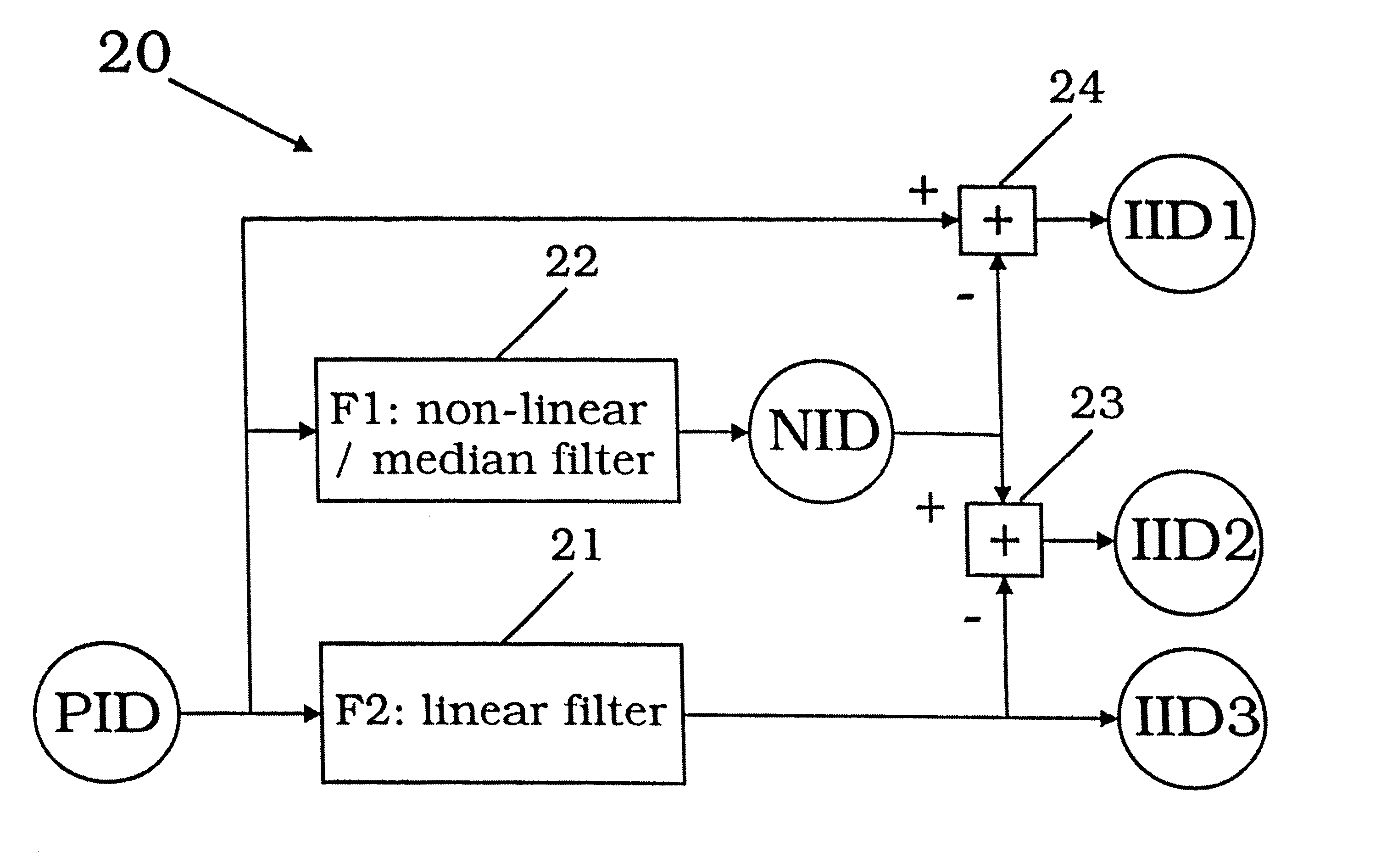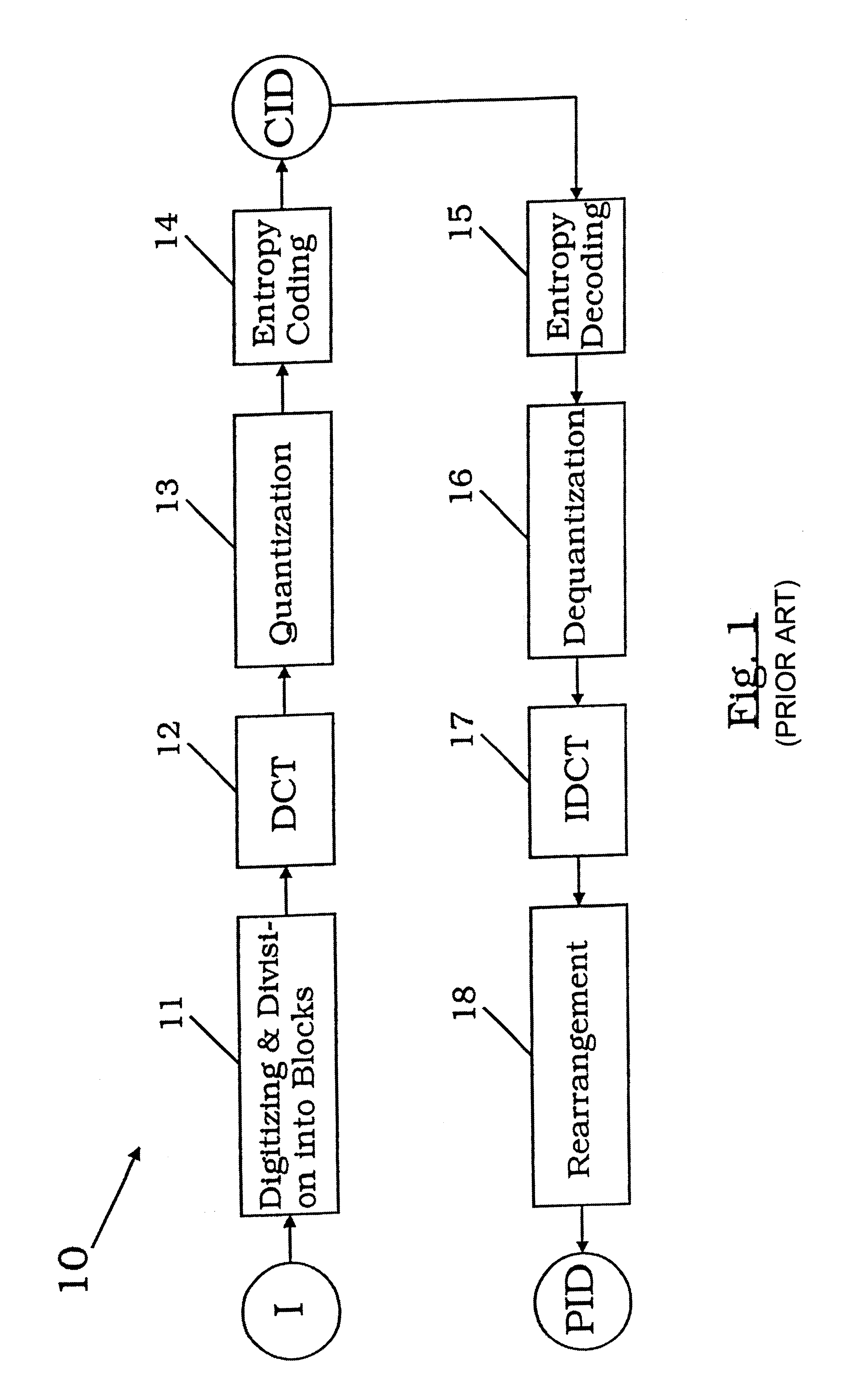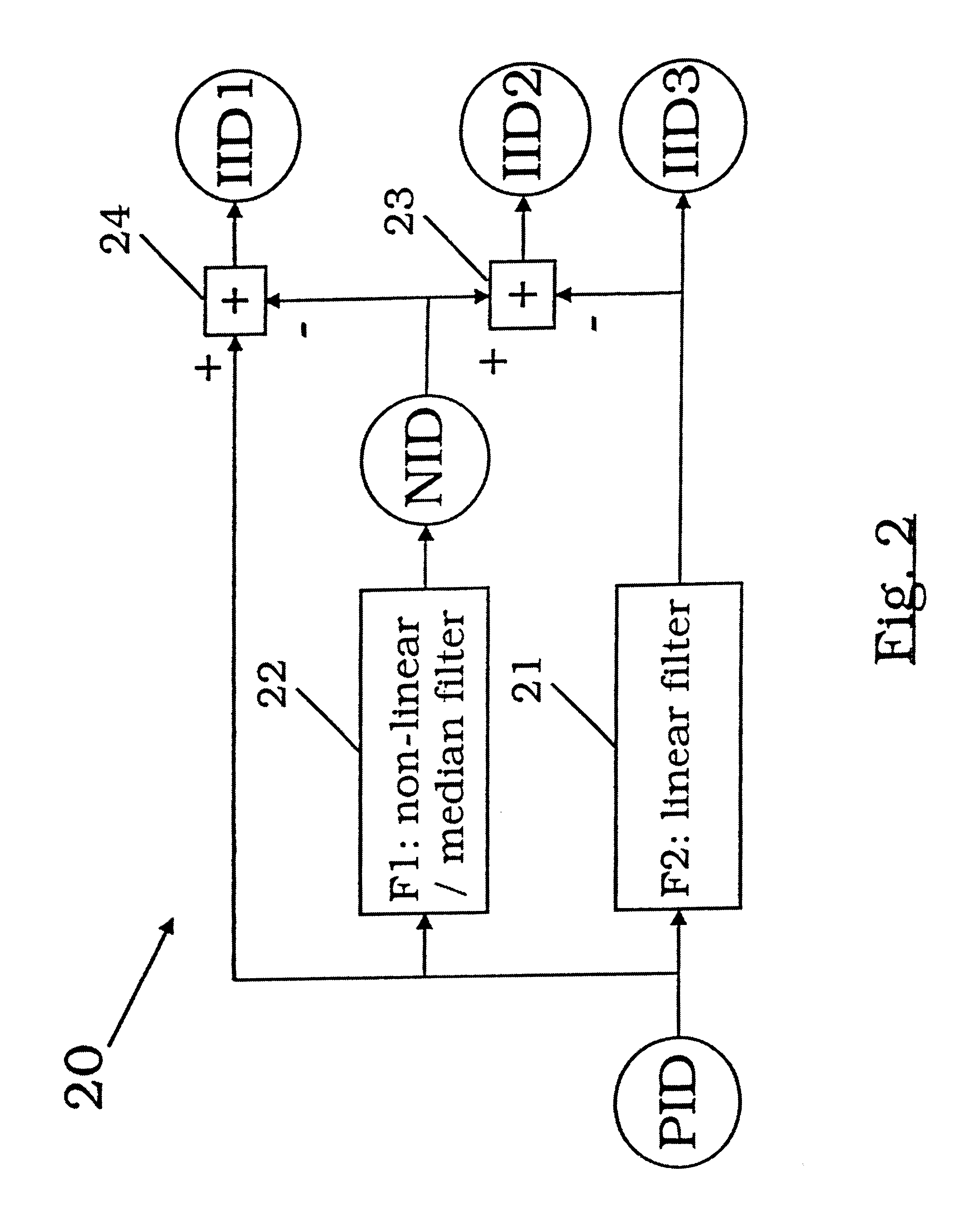Method for processing compressed image data for reducing blocking artifacts
a compression image and artefact technology, applied in the field of processing compressed image data for reducing blocking artefacts, can solve the problem that known methods are not applicable as pure post-processing methods to already coded data materials, and achieve the effects of reducing blocking artefacts, reducing blocking artefacts, and low degradation of image details
- Summary
- Abstract
- Description
- Claims
- Application Information
AI Technical Summary
Benefits of technology
Problems solved by technology
Method used
Image
Examples
Embodiment Construction
FIG. 1 shows by means of a schematical block diagram a conventional process 10 for a transformation encoding and decoding of an image I to yield a set of primary image data PID.
An incoming image I is digitized and subdivided into blocks in a first step 11. Each of the blocks is then further processed by for example a discrete cosine transformation DCT in step 12. Furtheron, the obtained coefficients for the blocks are quantized in step 13 and afterwards they are further processed by for instance an entropic encoding process in step 14. As an intermediate output a set of compressed image data CID comprising a compressed version of the image I is obtained.
From the set of compressed image data CID a decompressed image is generated as a set of primary image data PID by applying first an entropy decoding in step 15, a dequantization process in step 16 followed by the inverse IDCT of the discrete cosine transformation DCT of step 12 in step 17. Rearrangement of the data in step 18 yields ...
PUM
 Login to View More
Login to View More Abstract
Description
Claims
Application Information
 Login to View More
Login to View More - R&D
- Intellectual Property
- Life Sciences
- Materials
- Tech Scout
- Unparalleled Data Quality
- Higher Quality Content
- 60% Fewer Hallucinations
Browse by: Latest US Patents, China's latest patents, Technical Efficacy Thesaurus, Application Domain, Technology Topic, Popular Technical Reports.
© 2025 PatSnap. All rights reserved.Legal|Privacy policy|Modern Slavery Act Transparency Statement|Sitemap|About US| Contact US: help@patsnap.com



